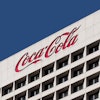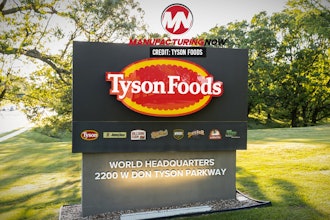
 Mike Edgett
Mike Edgett“Now is the time to get your ducks in a row.” You have likely heard that old saying before, possibly as a warning to stop procrastinating and start expediting preparation for an important event. This saying also aptly fits year-end planning for food and beverage companies. This is the year to fully commit to modernizing operations and upgrading technology to provide a competitive advantage. It is time to put plans in place and have your strategy mapped and neatly aligned.
Old Obstacles Are Still in the Way
Preparing for an era of modernization may sound simple. But, the food and beverage road toward digitalization has been littered with obstacles. Transformation has swept through other industries, like entertainment, media and travel, resulting in significant disruption. Many food and beverage companies have been cautious and reluctant to leap into the deep end of the digital pool. Food and beverage manufacturers, from those who make pet food to producers of plant protein ingredients, tend to be risk-averse and heavily focused on day-to-day activities. Processes which have been perfected over time are difficult to give up — fearing a successful product line may be hurt by changes — whether that is the formula or the channel to market.
Extending downtime for automating production floor activities is also hard for food and beverage companies to work into the calendar. Cloud computing, the Internet of Things (IoT) and advanced analytics have been touted by analysts and explained by solution consultants in countless webinars and thought leadership papers with early adopters sharing impressive results. Yet, some companies are still on the sidelines observing — and waiting. That will change in 2019.
Predictions For 2019
As market analysts make their annual top predictions for 2019, the important role digital technology plays in making those predictions a reality is often overlooked or treated separately. However, the reality is that market leading companies depend on technology to drive their company’s growth. This is the year when companies will take a more holistic approach to tackling the latest trends and predictions. 2019 will be the watershed year — when advanced technologies will no longer be considered “nice to have” but will be seen as essential tools for keeping pace with market trends and customer expectations.
Five IT trends You Can Expect and the Industry Dynamic That is Driving Them:
- Greater adoption of IoT and sensors to decrease downtime and improve quality. We will start to see more IoT projects moving from vague plans to concrete proof-of-concept stages or straight to full implementation. A sense of urgency will build through the next calendar year, compelling companies to embrace the use of sensors to monitor equipment performance, detect early warning signs that could result in failure and contamination, and take proactive steps to maintain equipment. Sensors will also be used on farms to monitor herd health, soil conditions, crop yield and weather impact. Warehouse management and the supply chain will also benefit from sensors, connected devices and visibility into the physical location of goods.
- Cloud deployment of nearly all business systems to improve agility. Companies will discard their cumbersome modifications — which make upgrades difficult — and move to cloud deployment. With last-mile functionality embedded, modern Enterprise Resource Management (ERP) solutions eliminate the need for most of the modifications companies previously added to their legacy solutions. Cloud computing offers other benefits, including elastic storage of data, a necessity for companies who plan to use sensors and IoT technologies. Plus, because cloud solutions are continually updated as innovations are developed, the solution stays “always modern” with the latest functionality. This is a tremendous value for companies trying to keep pace with rapid change. The agility of cloud deployment also supports companies with a merger and acquisition strategy. Cloud solutions are quick to set up and launch, helping to easily bring newly acquired companies into the larger structure.
- Revisiting Supply Chain tools to be more responsive to market changes. This is the year food and beverage companies will realize that relying on old general-purpose planning software is no longer sufficient to manage the complexity of modern operational issues. With new channels to market, shorter lead times, and the continued growth of fresher foods with shorter shelf lives, growing companies will quickly see the planning complexity escalate. This will eventually interfere with key operational metrics such as down-time and order fill rates. To support their growth, companies will need to adopt planning tools that can optimize across several industry-specific variables.
- Embracing Product Lifecycle Management (PLM) to improve time to market of new products. Never have new product introductions been more important than they are today. Consumers have clear expectations about traceability, sustainability, and choosing foods which are healthy. Non-GMO ingredients, organic foods, humane treatment of animals and clean labels will continue to be hot topics in 2019. Companies will need to invest in Research and Development (R&D) in order to develop new products that will meet the demands of consumers. A PLM solution will be very helpful in managing the entire life cycle of a product, speeding time to market.
- Artificial Intelligence (AI) improves responsiveness. This technology is generating a great deal of buzz as companies are beginning to envision the use-cases and potential benefits. AI will be embedded in other solutions, such as business intelligence tools, predictive analytics, talent science and supply chain planning. Using data science, algorithms and machine learning, AI will anticipate outcomes and predict likely occurrences, based on historical data past outcomes. The solution will become more accurate as more experiences and data are collected. Food and beverage companies will find AI beneficial in predicting demand, making supply chain decisions, forecasting weather impact on crops and planning use of resources and optimal inventory levels for ingredients.
Next Steps
While some food and beverage companies have stalled on upgrading solutions and delayed embarking on digital projects, 2019 promises to be the year of taking action. As companies see more and more positive results shared by early adopters, the decision to invest becomes an obvious choice. Even companies which may have been hesitant in the past will see that now is the time to take advantage of modern capabilities. Cloud computing, Supply Chain Planning, IoT, PLM solutions and AI functionality are among those that will be top-of-mind in 2019. However, do not let all the options overwhelm you. Choose which area is most important to your growth and differentiation and start planning now.
Mike Edgett is Director of Industry & Solution Strategy – Process Manufacturing, at Infor.





















